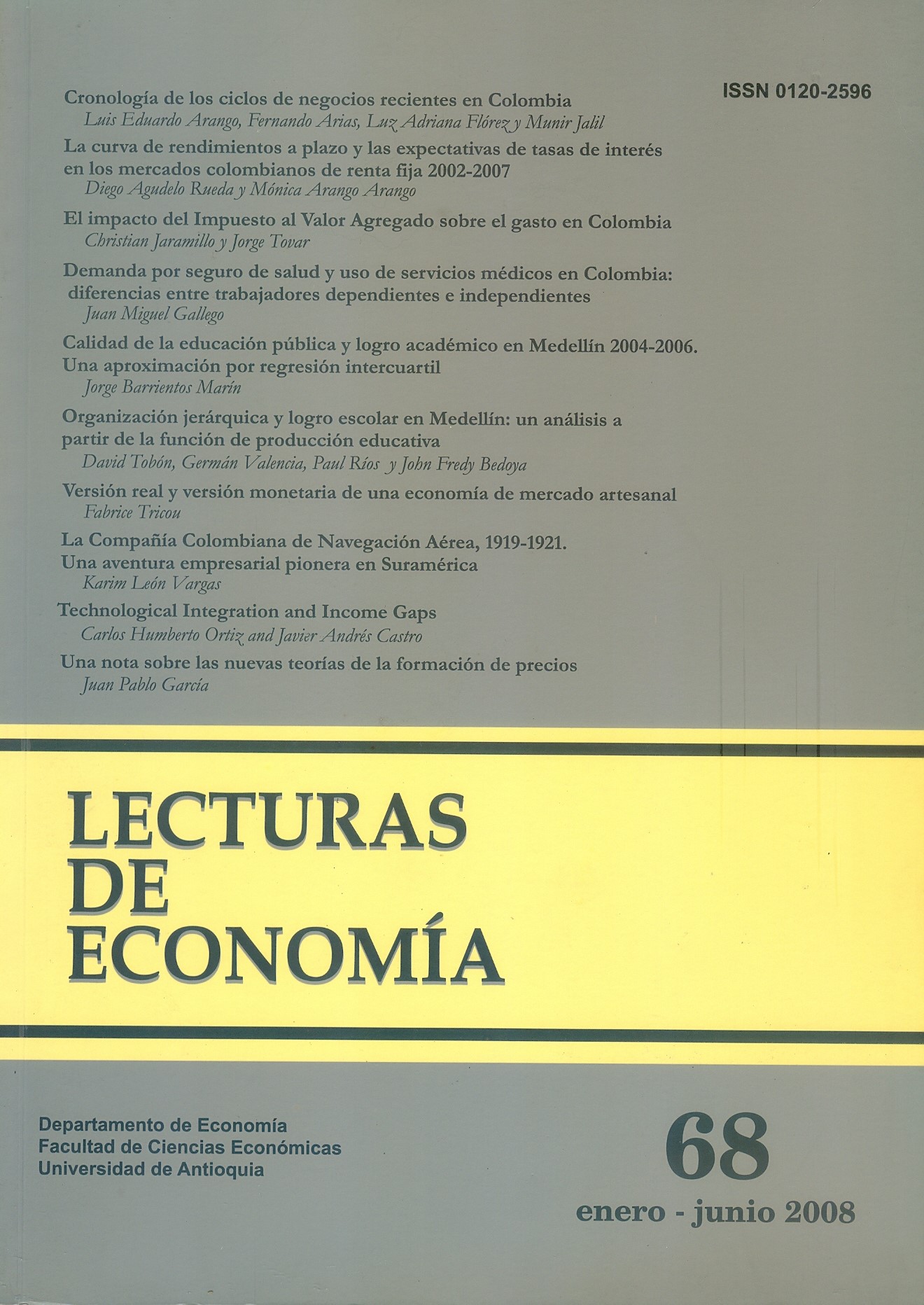Versión real y versión monetaria de una economía de mercado artesanal
DOI:
https://doi.org/10.17533/udea.le.n68a269Abstract
La economía artesanal representa específicamente la división social del trabajo porque trata de una economía de intercambio entre productores independientes; ella integra la producción (a diferencia de la economía de intercambio puro) pero descarta la división técnica del trabajo (a diferencia de la economía capitalista). Este texto presenta un modelo real y un modelo monetario de una economía artesanal en la cual cada productor especialista-consumidor generalista, pretende maximizar su utilidad. Mientras que en el primer modelo se dibuja una "economía del mercado general" asociada a los precios relativos de equilibrio, el segundo modelo monetario resume una "economía de los mercados particulares" conectada a precios absolutos de desequilibrio.
Palabras clave: precios, equilibrio, dinero, formación de precios, heterodoxia. Clasificación JEL: B30, B50, D46, D50, E23.
Abstract:
The handcraft market represents the social division of work because it is referred to the exchange between separated producers; unlike pure exchange and capitalist economies, the handcraft economy integrates production but gets rid off the technical division of work. This paper displays both real and monetary models of the handcraft market where each consumer-producer generalist, maximizes his utility function. In the first model a .general market economy. arises, which is related to relative equilibrium prices, whereas in the second one, the monetary model, a .particular market economy. arises, which is linked to absolute disequilibrium prices.
Keywords: prices, equilibrium, money, pricing, heterodoxy. Classification JEL: B30, B50, D46, D50, E23.
Résumé:
Comme économie d'échange entre producteurs indépendants, l'économie artisanale représente spécifiquement la division sociale du travail. Elle intègre la production (à la différence de l'économie d'échange pur), mais elle écarte la division technique du travail (à la différence de l'économie capitaliste). Ce texte présente un modèle réel et un modèle monétaire d'une économie artisanale dans laquelle chaque producteur spécialiste-consommateur généraliste cherche à maximiser son utilité. Alors que le premier modèle dessine une « économie du marché général » associée à des prix relatifs d'équilibre, le modèle monétaire esquisse une «économie des marchés particuliers » reliée à des prix absolus de déséquilibre.
Mots cléf: prix, équilibre, monnaie, formation des prix, hétérodoxie. Classification JEL: B30, B50, D46, D50, E23.
Downloads
Published
How to Cite
Issue
Section
License
This page, by Universidad de Antioquia, is licensed under a Creative Commons Attribution License.
Authors who publish with this journal agree to retain copyright and grant the journal right of first publication, with the article licensed under a Creative Commons Attribution-NonCommercial-ShareAlike License allowing others to share it as long as they acknowledge its authorship and original publication in this journal.
Authors can enter into separate, additional contractual arrangements for the non-exclusive distribution of the journal's published version of the work (e.g., post it to an institutional repository or publish it in a book), provided that these arrangements be not for profit and the journal be acknowledged as the original source of publication.
Authors are permitted and encouraged to post their papers online (e.g., in institutional repositories or on their websites), as it can lead to valuable exchanges as well as greater citation of the published work.







